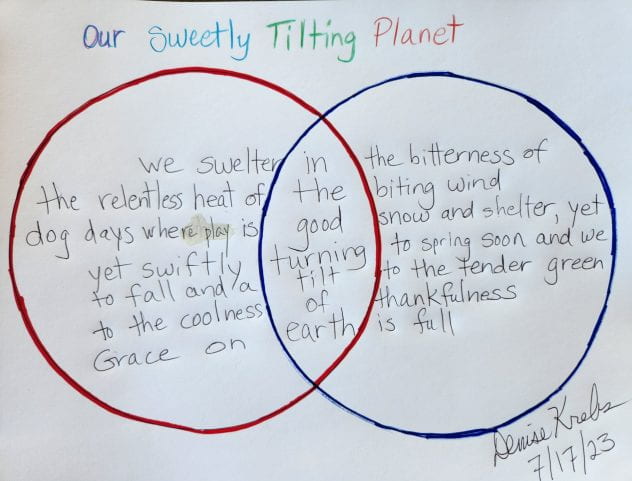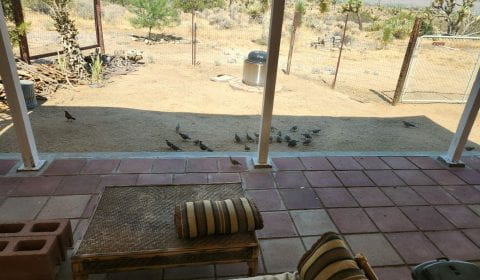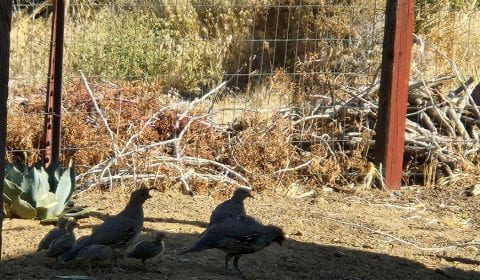Saturday, 15 July 2023
“The Masks We Wear” with Mo Daley
In a golden shovel poem I used this striking line from Mo’s mentor poem called “Inherited Mask.”
living life hiding behind a mask
trying not to let the plaster crack
To My Mask
Living with you has made
life duller and fabricated–
hiding my depth. Who am I
behind the bluff?
A quiet, nice, wave-calmer is my
mask (that’s you). Yet I am a story of
trying on, opening, weaving through time. I’m
not quite content with me without you, but
to be honest, you can be an excuse to
let me off the hook. I can’t be hurt if
the truth hides. But once in a while the
plaster of pretense cleaves, and I rejoice in the
crack I am making in you.
Sunday, 16 July 2023
Fibonacci Poem with Mo Daley
sweet
bird
rumpus
gathering
dissonance of praise
consonance of contrasting calls
quail, jay, thrasher, finch, oriole, dove, woodpecker, wren
dozens assemble on our porch
bird feeders times four
emptied yet
again
sweet
birds
Monday, 17 July 2023
Venn Diagram Poem with Susan Ahlbrand

Tuesday, July 18, 2023
Places We Call Home with Shelby Sexton
To be home is to be in this place
With you as we finish the race
At peace, in love, holding hope,
Holy twists of life’s kaleidoscope
Wednesday, July 19, 2023
Where Were We? with Mike Dombrowski
Don’t hand me the microphone, I thought.
You’re doing fine for both of us.
When did the mom of the bride
have to start talking at
wedding receptions?
What do I say?
I should’ve thought!
Ready?
No!
Dumb
Quiet
Finally
I spewed a few
words I don’t recall
The important thing is
our precious couple’s ready
for life together. Now, let’s eat
and laugh and play and dance and dream hope.


